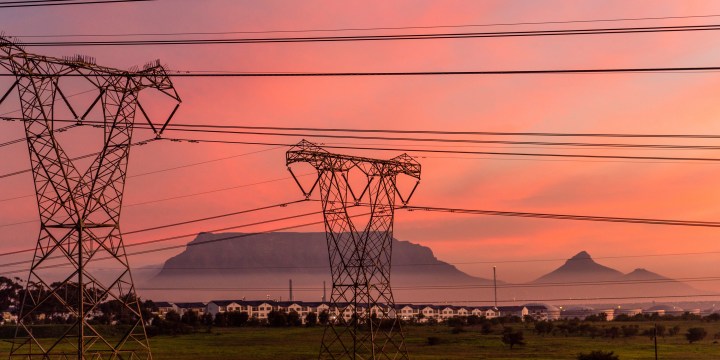ELECTRICITY CRISIS
Treasury warns Eskom to heed VGBE consortium’s report on problems and solutions

A new report identifies problems at Eskom – including complex management, low morale, lack of accountability and slow procurement – and recommends proper maintenance work, even at the cost of more short-term power cuts.
Now that German experts have provided a detailed diagnosis of the problems at Eskom – mainly attributed to dysfunctional and overly complex management systems – what happens next?
The experts, who have banded together under a consortium called VGBE, detailed the reasons behind the poor performance of Eskom’s coal-fired power stations in a 600-page report, which also includes reform proposals.
To recap: they found that dysfunctional management systems at Eskom often result in power station managers wasting time and not achieving much at all.
Morale at power stations is low, and bonuses for hard-working employees could improve motivation levels.
Eskom also lacks a culture of accountability.
Procurement processes are excessively slow, sometimes taking up to six months to get parts for repairs or maintenance, and red tape should be cut.
Proper maintenance work at power stations is needed, even if “this means a higher level of load shedding for a limited period of time”.
Eskom and National Treasury have received the report and have been sitting on it for six months. Treasury released it publicly only on 1 March, which also prompted a response from Eskom at the weekend.
The response was along these lines: Eskom welcomed the technical assessment from the VGBE experts; it was aware of its problems and it has its own plans to fix them.
Eskom argued that some improvements had been made to the performance of power stations between March and May 2023 – the period during which the VGBE team visited operations and made its assessment.
The next step
New Eskom CEO Dan Marokane, who started work at the beginning of March, will assess the report and implement its recommendations.
Marokane needs to ensure that actions taken are aligned with Eskom’s recovery plan which has already been approved by the board.
Eskom said after the release of the VGBE report: “The board has asked our new group chief executive, Dan Marokane, to assess the Generation Operation Recovery Plan [Eskom’s plan] with the view to accelerate its execution.
“He will also make sure that VGBE recommendations are implemented. As a team, we know that ending load shedding largely depends on the disciplined execution of our recovery plan.”
Marokane is no stranger to Eskom. He served as an executive from January 2010 to June 2015. As the 11th CEO, he returns to a broken power utility that cannot fulfil its basic mandate of keeping the lights on.
The VGBE report is not binding on Eskom, but Treasury might exert pressure on the utility to implement the team’s proposed reforms.
The assessment by the German experts was among the conditions of the Treasury’s R254-billion bailout of Eskom.
The utility is now required to show demonstrable progress in restructuring its operations (separating into distribution, generation and transmission), and conducting critical maintenance to power stations.
Bailout conditions
Treasury already has Eskom on a short leash after it failed to meet one of the bailout conditions.
The fact that Eskom will not meet the 31 March 2024 deadline to sell the Eskom Finance Company (its subsidiary, which offers home loans to its workers) will result in Treasury reducing financial support to less than R254-billion.
Treasury has proposed reducing the allocations of R78-billion in 2023/24 and R66-billion in 2024/25 by R2-billion in each year.
An investor in Eskom debt told Daily Maverick that Treasury might take similar punitive action if management and the board failed to take the VGBE recommendations seriously.
“This report and its proposals cannot go like the many others before it; shelved, forgotten and not implemented,” said the investor.
Eskom said its board-approved turnaround plan (separate from the VGBE report) was starting to yield benefits.
Eskom’s plan is premised on increasing the maintenance of power stations, stepping up security and intelligence to prevent coal theft and sabotage, and extending the life of power stations that are due for decommissioning from now until 2030.
Curiously, the VGBE report does not examine the feasibility of postponing decommissioning.
Medupi, Kusile back online
Eskom said it had sorted out the design-related problems at Medupi and Kusile and generating units at those power stations were recently brought back online.
It further said unplanned outages (as a result of breakdowns) fell from 34% of total generation capacity in January 2023 to 30% in January 2024. However, the country was recently plunged into Stage 6 blackouts as a result of more breakdowns.
Eskom also said its energy availability factor (EAF) – the main metric for assessing the performance of its 14 power stations – was stable.
The EAF refers to the average percentage of power stations available to dispatch energy at any one time. A higher EAF indicates that Eskom’s power stations are performing better. This lowers the probability of higher stages of load shedding.
Eskom’s EAF has been below 55% in recent months – lower than the board’s target of 65% by this month and 70% in March 2025.
It may be too early to determine whether Eskom’s efforts, unrelated to the VGBE assessment, are demonstrating sustainable progress.
Cosatu nod
The good news is that Cosatu, representing many of Eskom’s 40,000 workers, supports the new management and its plans to stabilise the utility.
Cosatu’s Matthew Parks said Marokane should be “given all the support and resources necessary to succeed”.
“This includes financial relief to reduce the SOE’s heavy debt burdens, recapitalisation to enable investments in ageing infrastructure and machinery, upgrade workers’ skills, fill critical vacancies and, most critically, support from law enforcement to tackle the cancers of corruption,” he said. DM
















 Become an Insider
Become an Insider
As of today, Eskom haven’t even updated their website to reflect their new CEO’s arrival. But then they might be concentrating on the important stuff rather than the easy!
Much could be saved too by cutting back on employment, Eskom being vastly overstaffed…..but no comment from COSATU on that!
I have limited confidence that Eskom’s generation business can be fixed. It is an extension of the ANC’s dysfunction, and there are just too many systemic challenges. I see a steady decline over the next 5 to 10 years to an ignominious demise. The move to clean energy and an efficient privatised competitive energy market makes too much sense. The financial debt will be with us for a generation or more; the environmental destruction sadly is permanent. What a sh*tshow!! Or perhaps clusterf&ck is a better description.